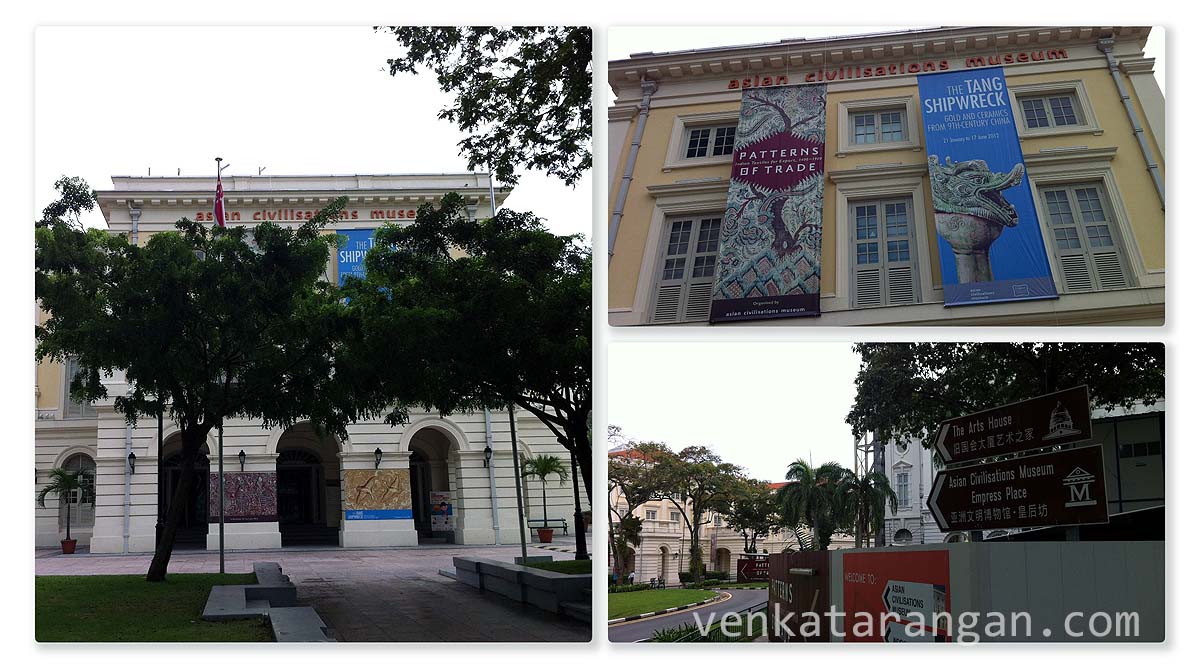Last week, I was in Singapore for 2 days. After doing a lunch meeting at Singapore Cricket Club near Padang, I had the rest of the day free. I got a suggestion that I visit the “Asian Civilisations Museum” that was just opposite on the other side of the road. The next 4 hours it was a learning experience for me at the museum.
Till the 1980s the building known as Empress Place Building was used for various Government Departments. In 1989 it was converted into a museum and in 2003 it was completely transformed into the Asian Civilisations Museum.
The museum has various galleries – Southeast Asia, West Asia/Islamic, Singapore River, China, India and more. Obviously, Singapore’s past is not long to have numerous antiques of its own, but the way they have curated items from around the world into logical groupings of Religion, Culture, Language and Regions were easy to follow, and the explanations accompanying every artefact was the simplest I have read – for example the display cards about Vaishnavism or Arabic Numerals were interesting.
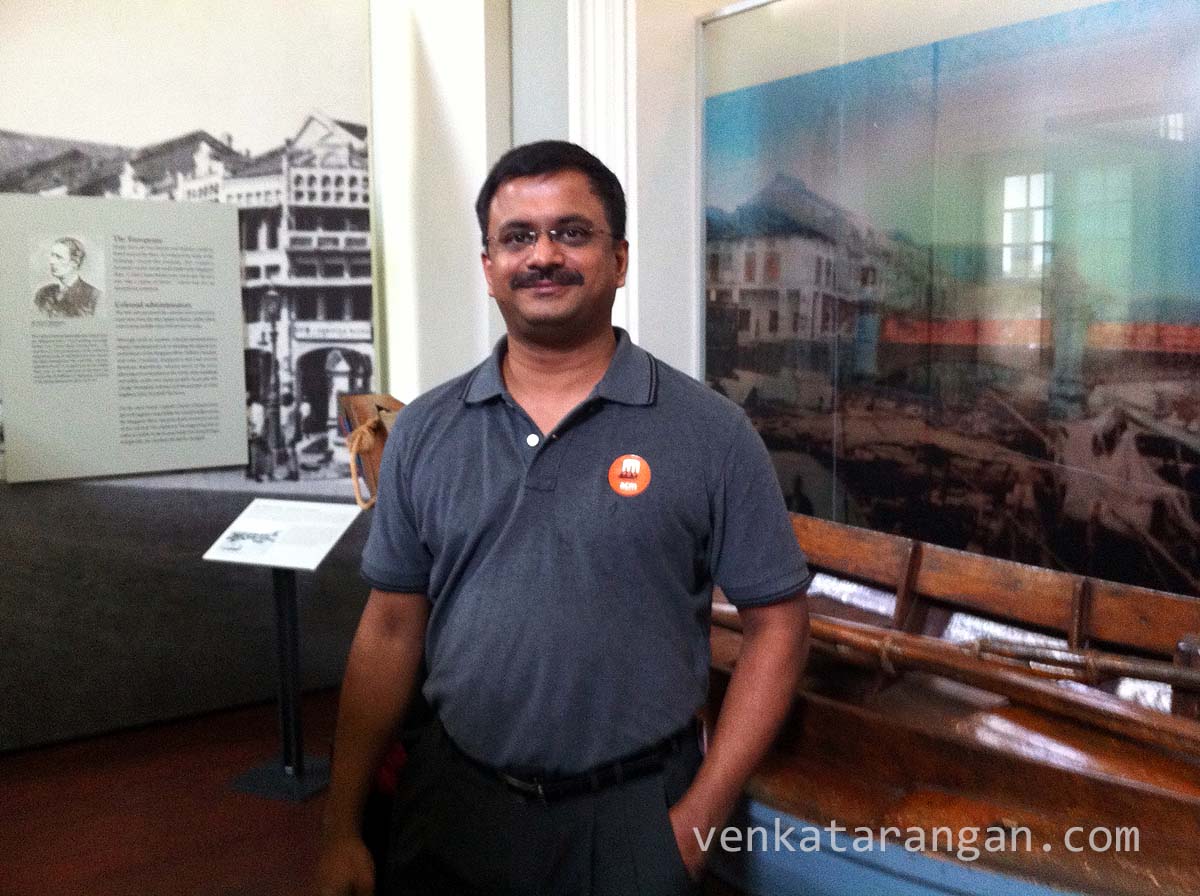
Venkatarangan inside the Asian Civilisations Museum, Singapore in 2012
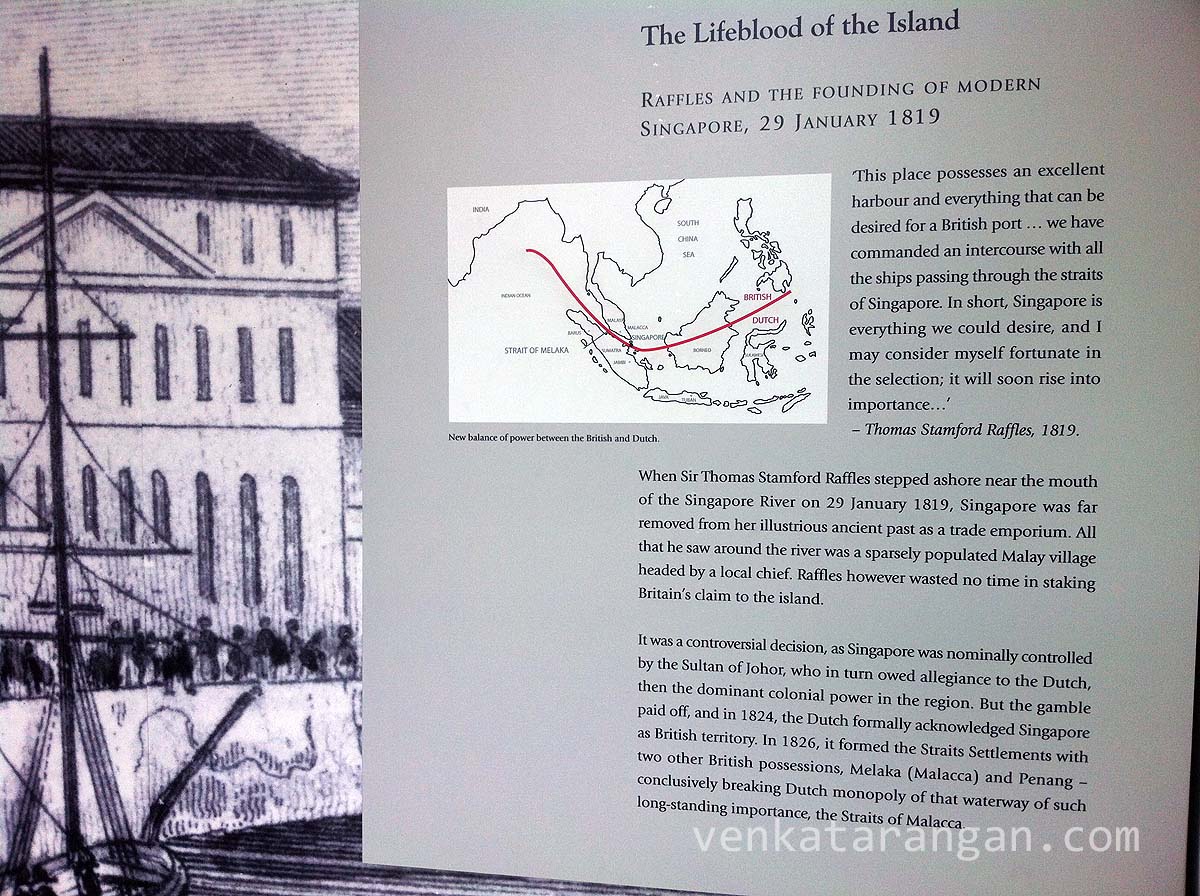
Raffles and the founding of modern Singapore – 29 January 1819

The Tang Shipwreck – Gold and Ceramics from 9th Century China
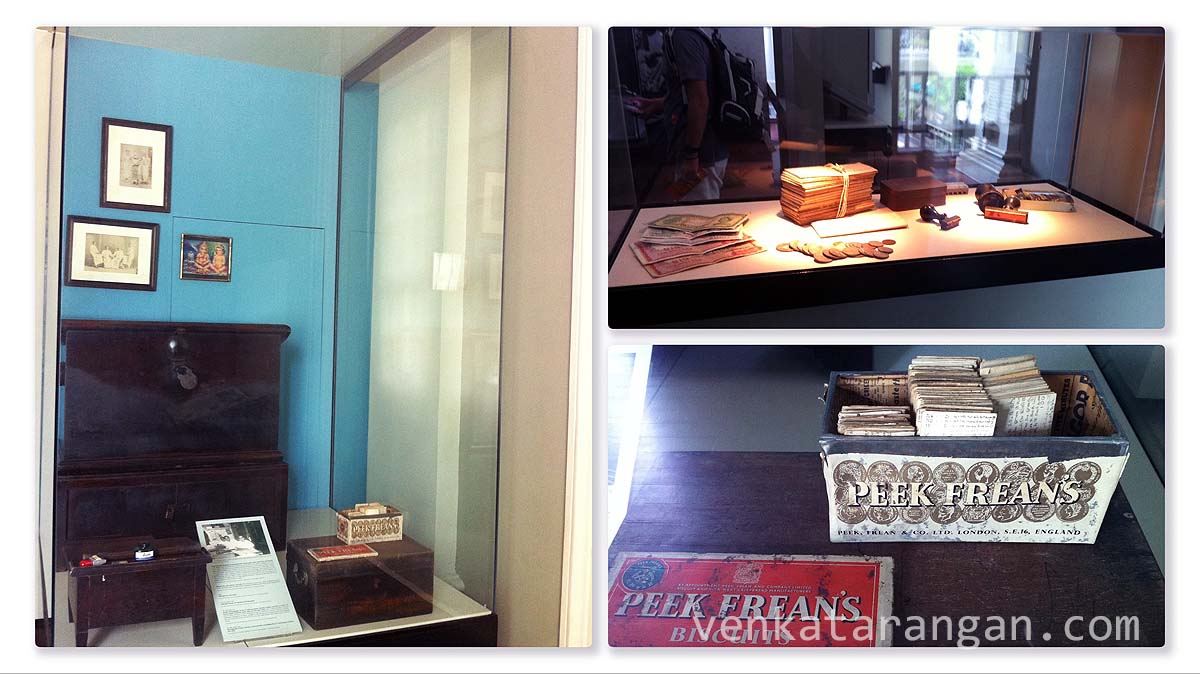
The Chettiyar community from Tamil Nadu, India made substantial economic contributions not only in India but also in Southeast Asia, particularly in Myanmar, Sri Lanka, Malaysia, Singapore, Indonesia and Vietnam. By providing the capital required to start up businesses they helped to strengthen the local economy. Seen here are Teak Kittangi Furniture comprising desk (மேஜை பேட்டி), chest with base (பேட்டகம்) and stool. Biscuit tin with clients’ records – The Chettiyars’ economical nature is illustrated here is their use of recycled containers to file carefully recorded details. Storage Box. Calendar image of God Ganesha and God Murugan.

The three-dimensional Bronze Walking Buddha (left) probably from the 15th to 16th centuries, Sukhothai, North-Central Thailand, is full of fluidity and movement. Standing Buddha. (bottom right) Sri Vijaya period standing bronze Buddha from the 5th to 9th centuries, Kedah, Malay Peninsula.

(Top) The Bronze Buddapada Thailand, Rattanakosin period, 19th century, Thailand. In the middle is a Dharmachakra (Wheel of Law), symbolic of Buddha’s teachings. It is surrounded by the 108 symbols of good omens, animals of the horoscope and royal insignia.
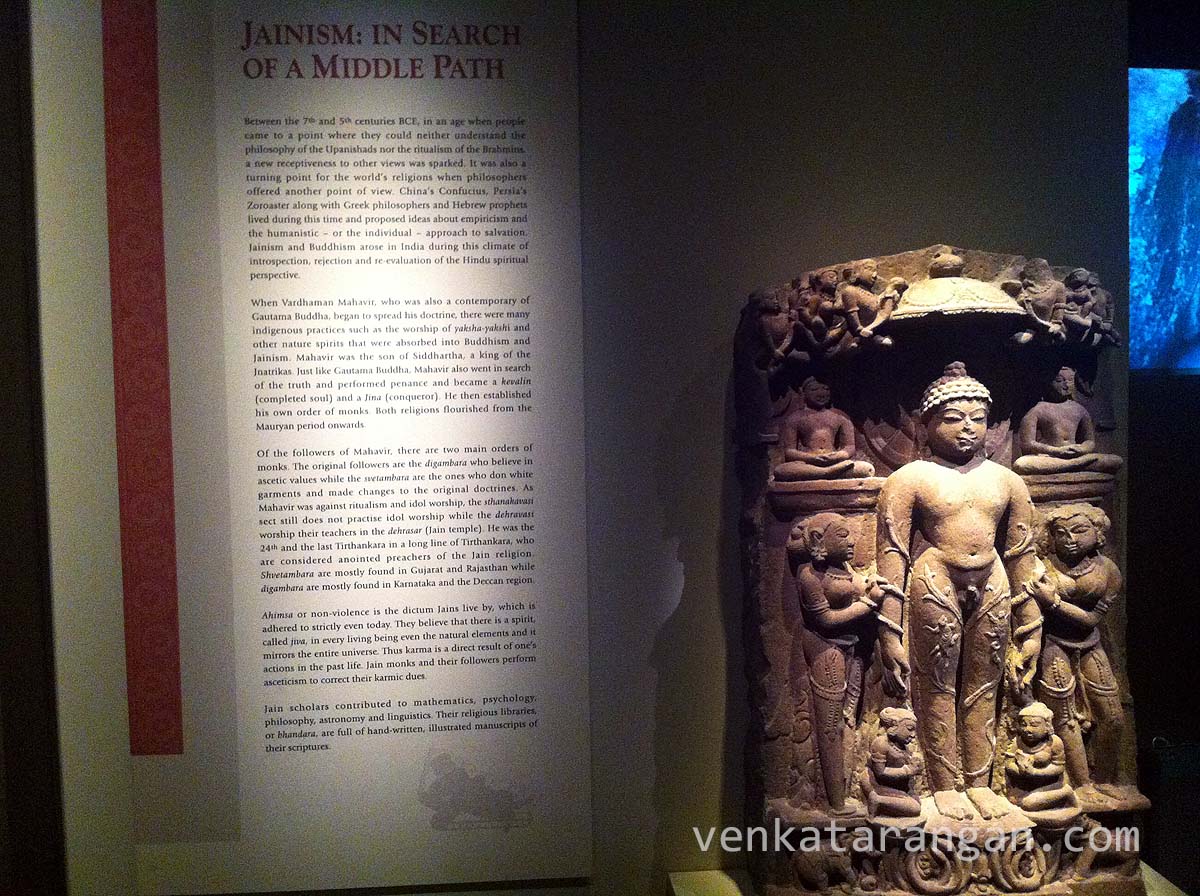
Jainism: In search of a middle path – Between the 7th and 5th centuries BCE, in an age when people came to a point where they could neither understand the philosophy of the Upanishads nor the ritualism of the Brahmins, a new receptiveness to other views was parked. When Vardhaman Mahavir, who was also a contemporary of Gautama Buddha, began to spread his doctrine, there were many indigenous practices. Mahavir also went in search of the truth and performed penance and became a kevalin (completed soul) and Jina (conqueror). He then established his own order of monks. Of the followers of Mahavir, there are two main orders of monks – digambara and svetambara.
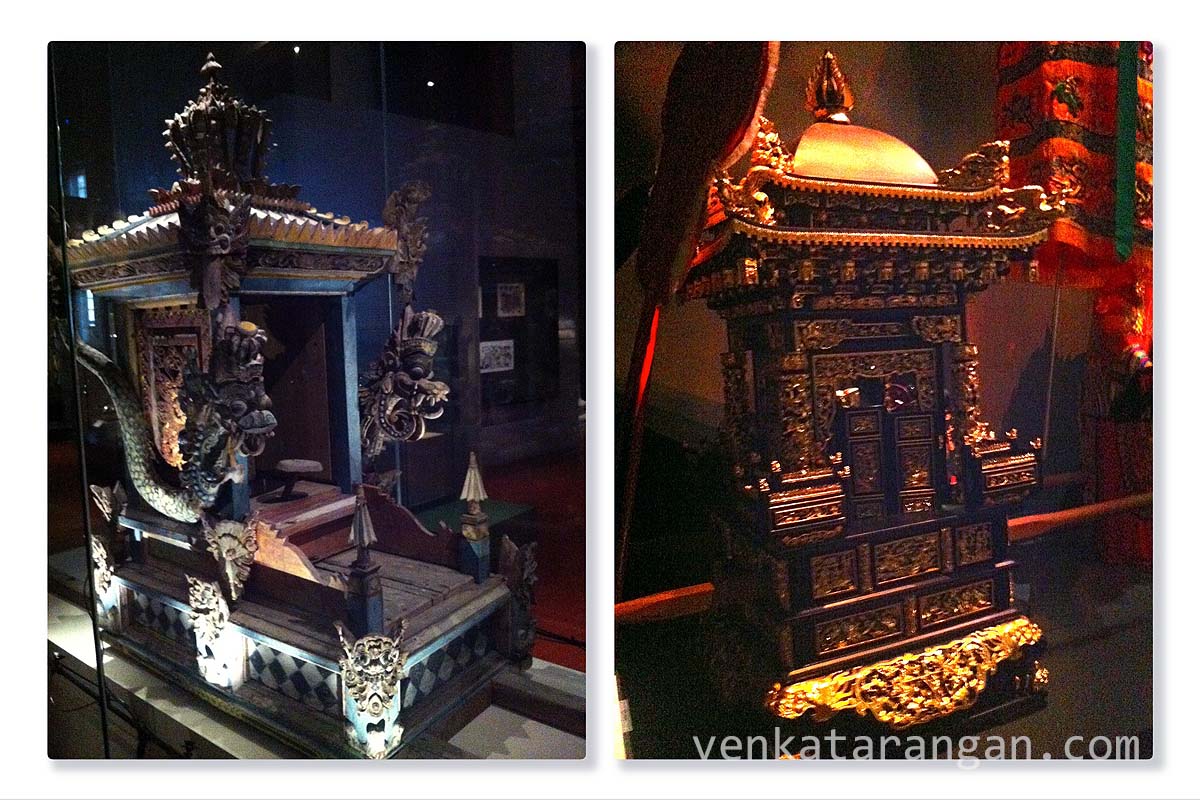
Palanquins from various cultures and time-period
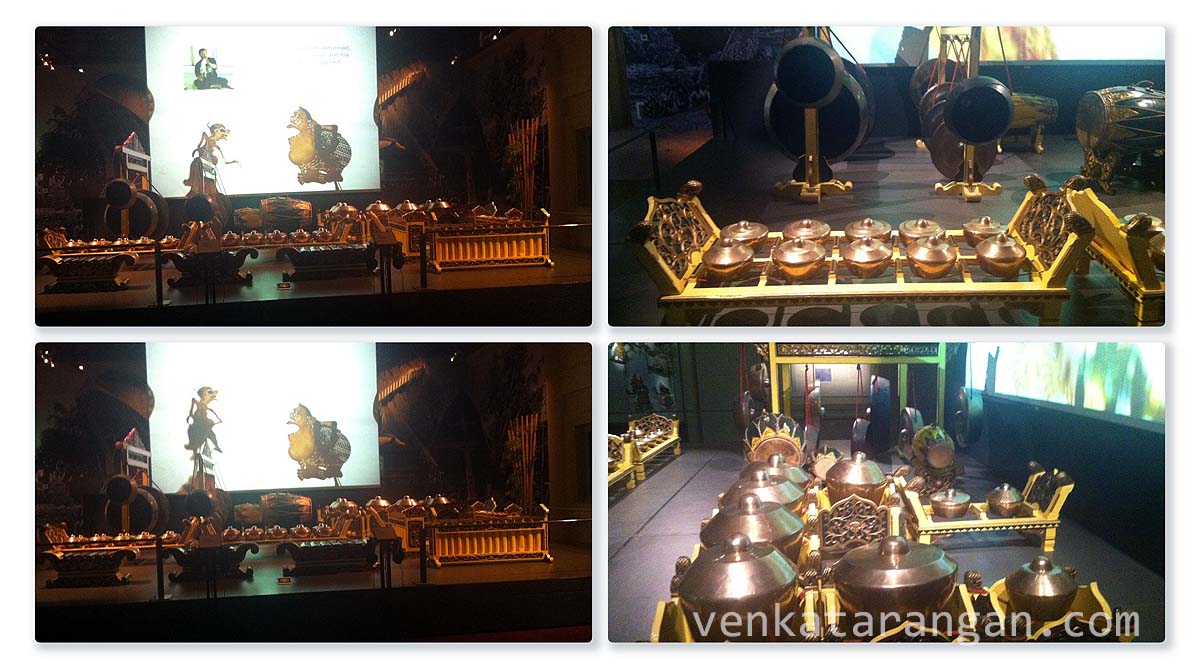
A puppet show showcasing a region’s culture

(Top) – Various Islamic artefacts and the Holy Qur’an. Dala’il al-Khayrat (Guide to Goodness), 18th to 19th centuries, (top left) India and (top right) Turkey. (bottom centre) Stone pane, 14th century, western India, carved with an inscription in thulth script that reads “The opener of Gates of sustenance, the Omniscient…”
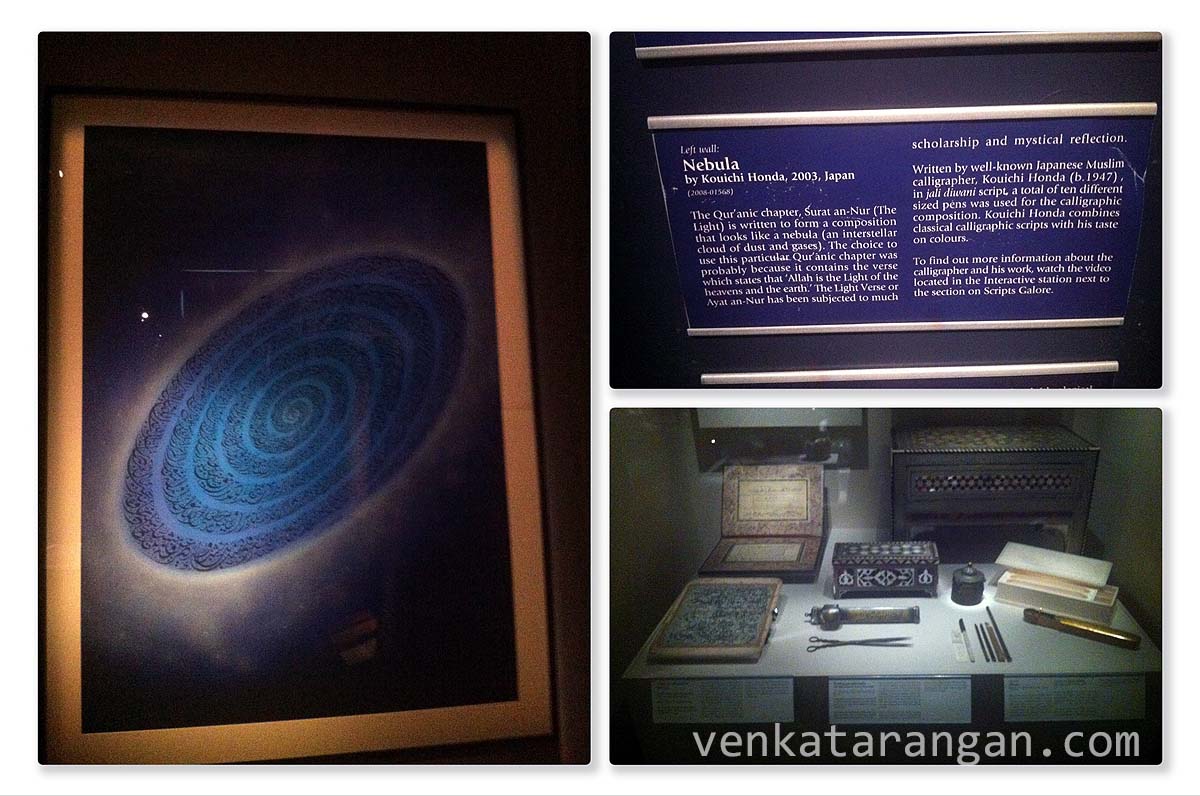
Nebula by Kouichi Honda, 2003, Japan. The Qur’anic chapter, Surat an-Nur (The Light) is written to form a composition that looks like a nebula (an interstellar cloud of dust and gases). The choice to use this particular Qur’anic chapter was probably because it contains the verse which states that ‘Allah is the Light of the heavens and the earth”/
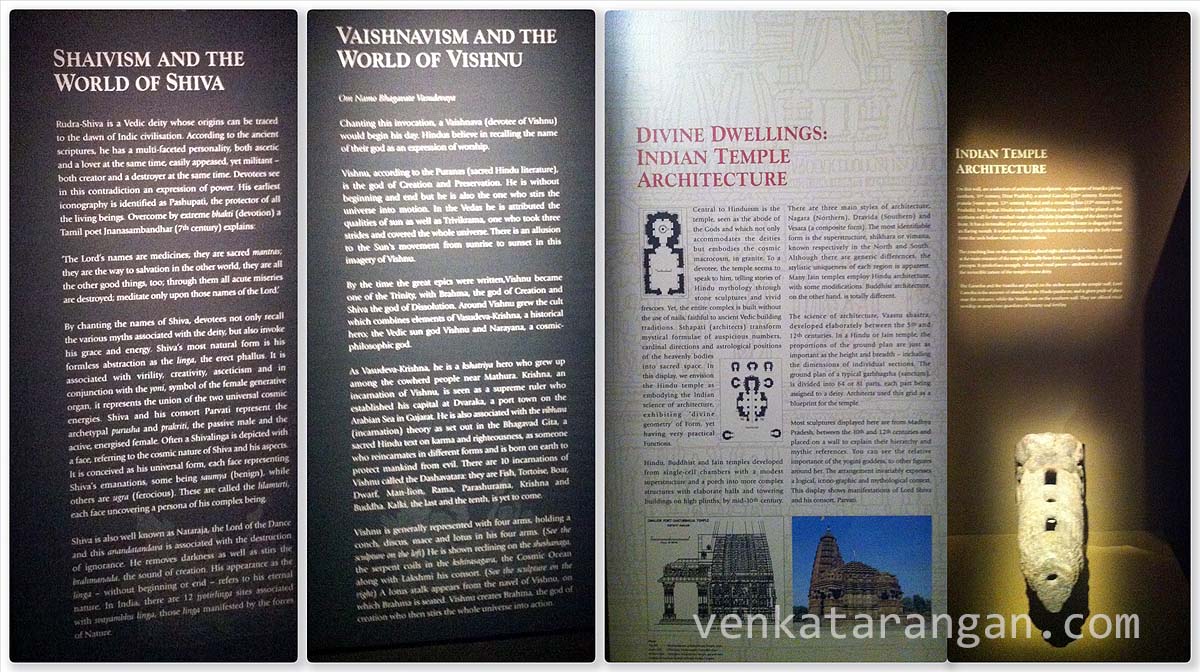
Shaivism and the World of Shiva. Vaishnavism and the World of Vishnu. Divine Dwellings: Indian Temple Architecture.
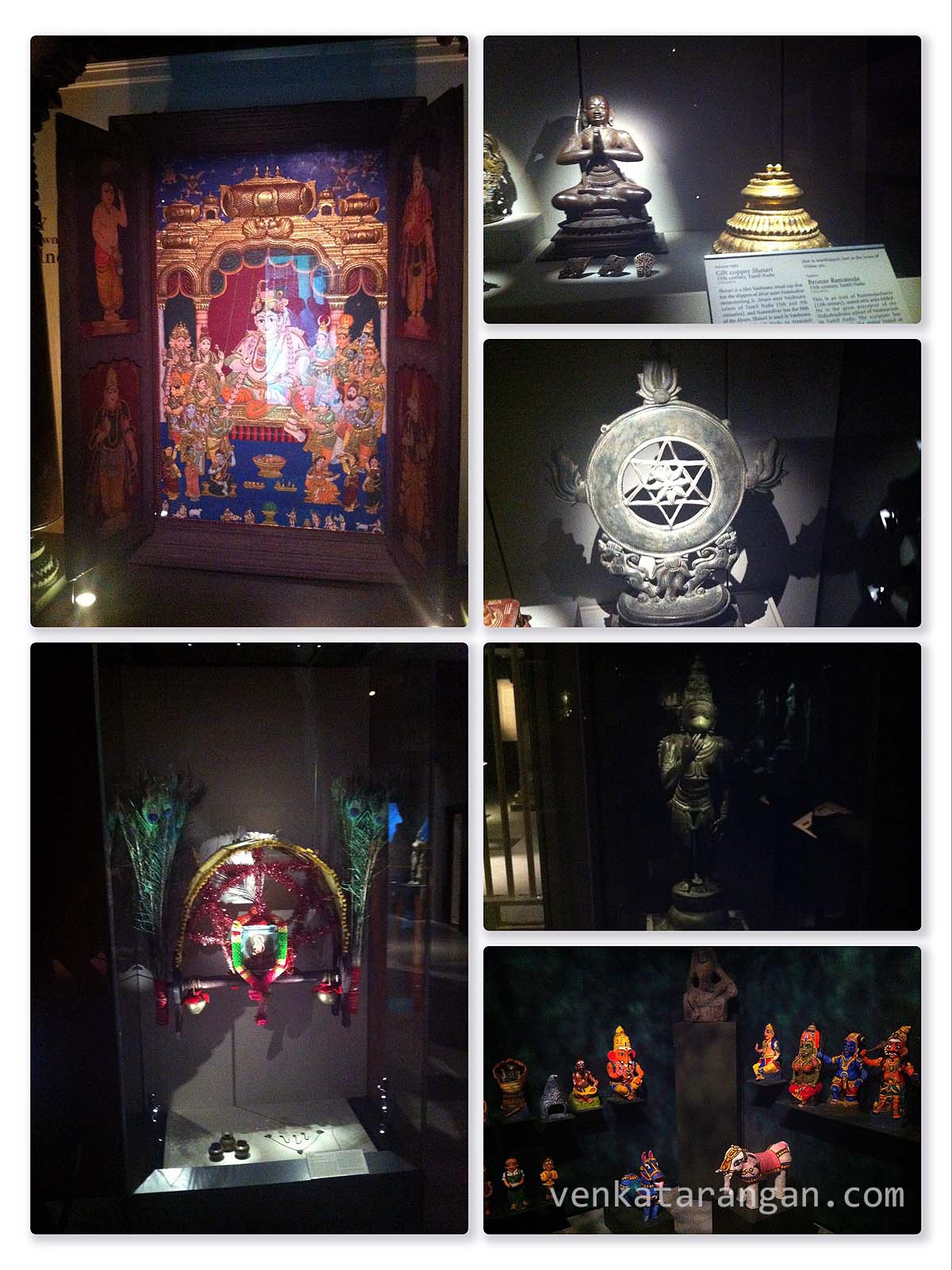
Display of paintings and models of various Hindu Gods and Symbols.

In the section “When India clothed the world” there are many types of fabric and textile handwork from various centuries
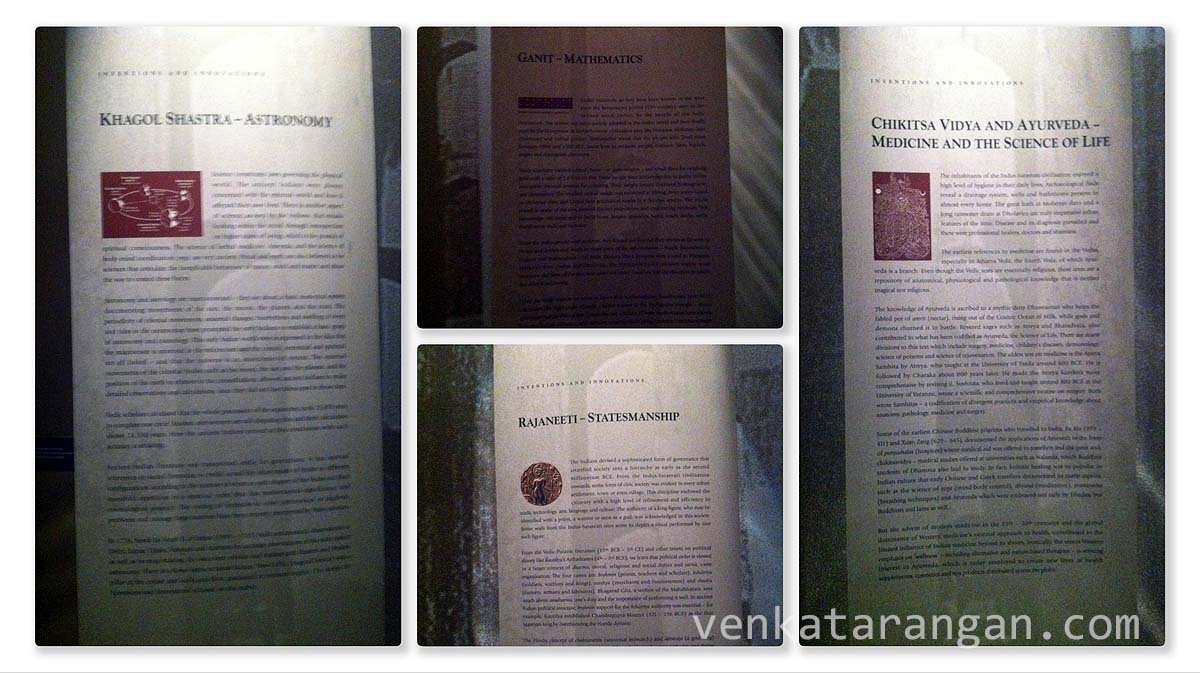
Various disciplines of learning in ancient India – Khagol Shastra (Astronomy), Ganit (Mathematics), Rajaneeti (Statesmanship) and Chikitsa Vidya and Ayurveda (Medicine and the Science of Life).

Count to Ten (A Hands-On) gallery for all ages – if learning numbers were this fun, I would’ve been a happy student in school
Next time, you are visiting Singapore, apart from Sentosa and Orchid Street, plan to spend a few hours here in this museum – it will be worth it!
Apart from learning from the items on display, I met a neurosurgeon from the USA, who gave me a mini-lesson on philosophy on how everywhere in the Universe and in our body the same energy flows and are made of the same atoms that were created during big-bang!
Continue reading about my trip to Singapore – Singapore Boat Quay & China Town, and, Singapore Food Mee Goreng and Baby Kai Lan with Garlic.


